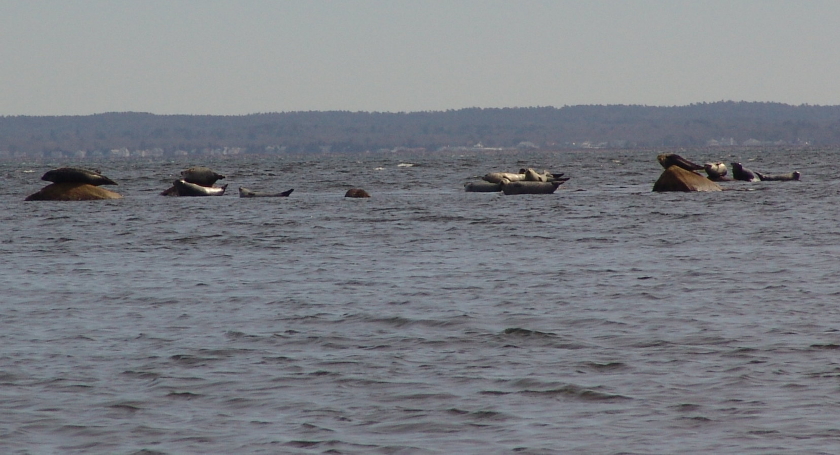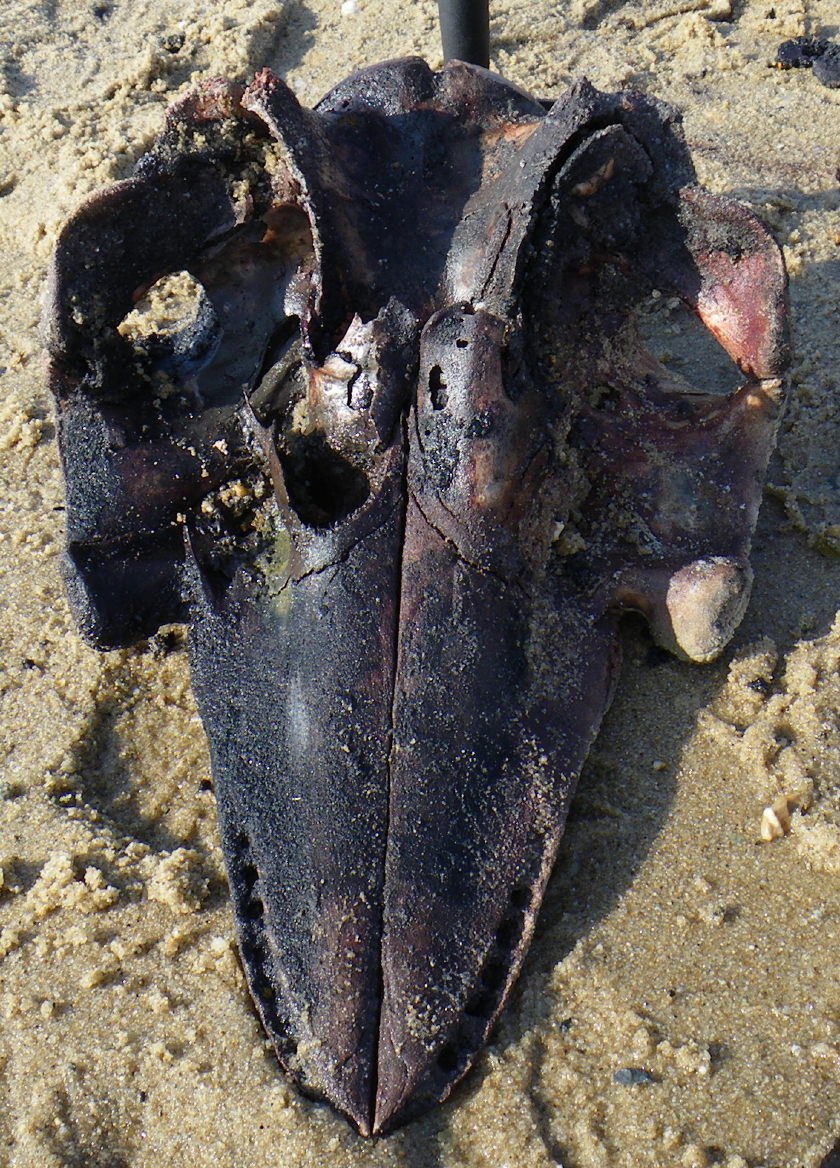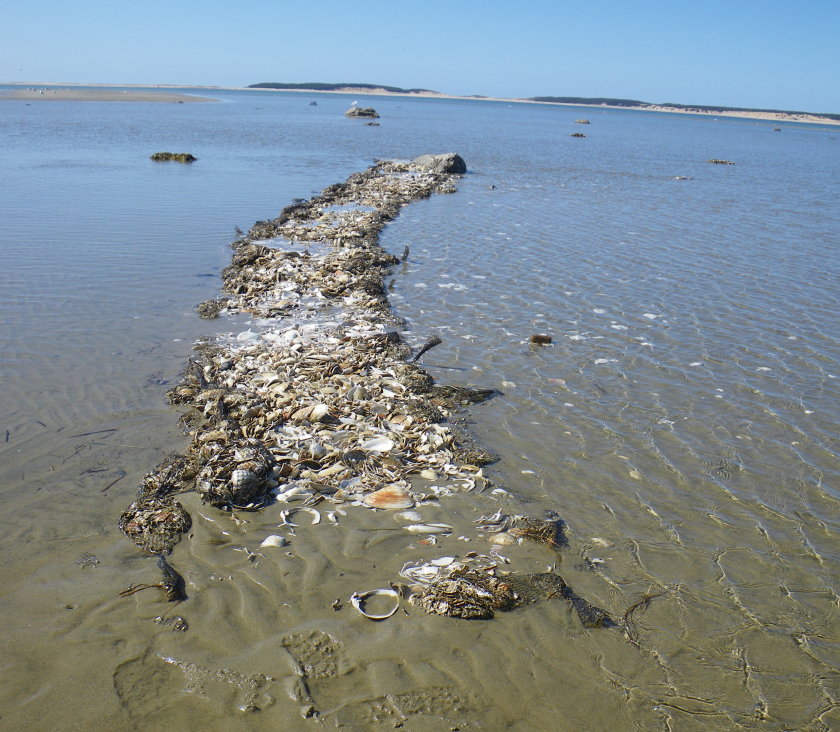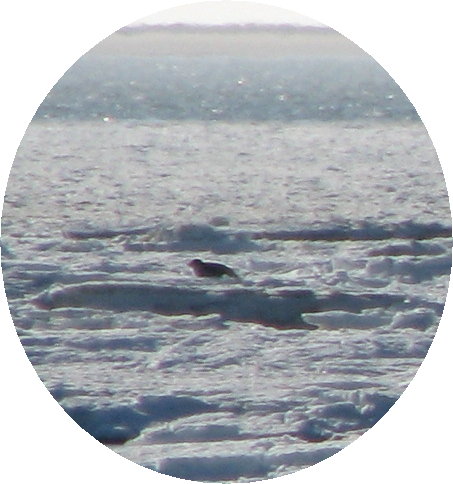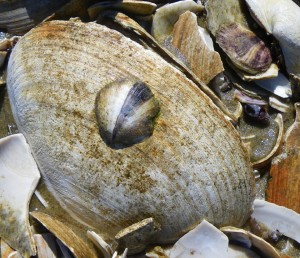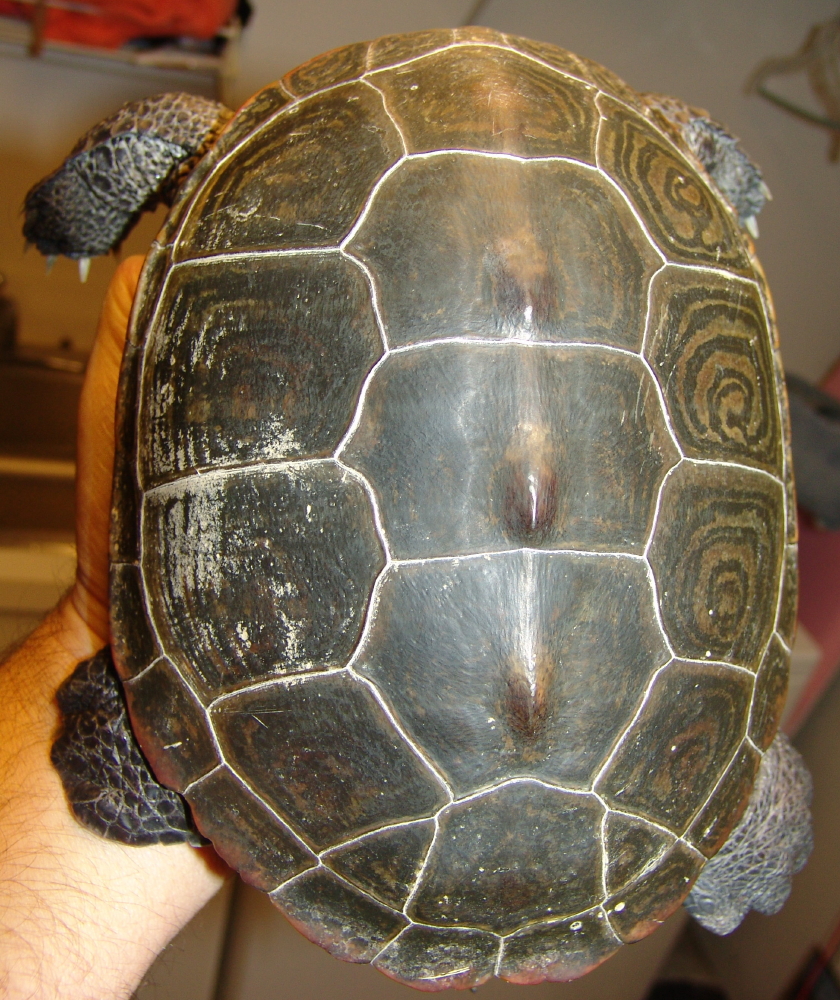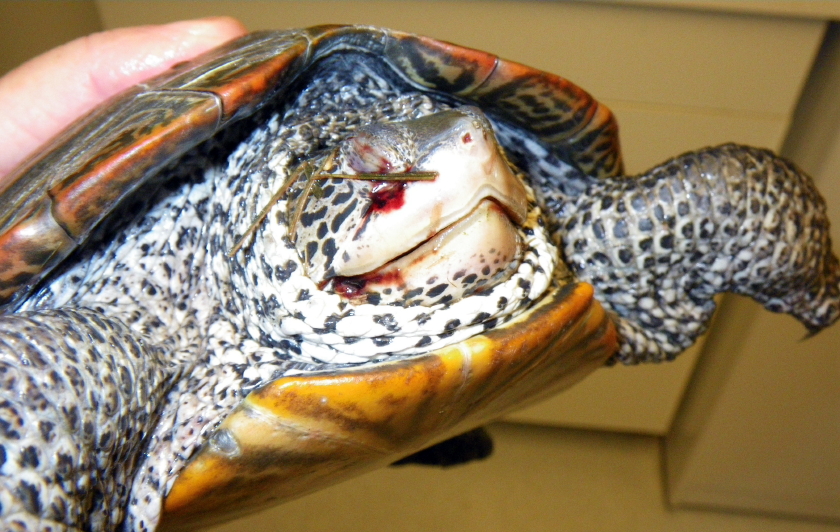Hazy Rumors of T. Rex Sightings on South Coast
Turtle Journal turns down no challenge, retreats from no obstacle, avoids no risk to life or reputation, in order to gather documentary evidence of natural or even supernatural phenomena for its loyal readers. So, with the same aplomb with which we approach terrapin hatchlings, we launched an expedition to the South Coast of Massachusetts to pursue hazy rumors of creatures descendent from Tyrannosaurus rex roaming loose within Brainard Salt Marsh.
Click Here to View Video in High Quality
Stalking Shadow of T. Rex through Brainard Marsh
We won’t reveal our source, but Turtle Journal recovered shadowy footage of Tyrannosaurus rex-like creatures prowling the dense woodlands surrounding a freshwater pond within Brainard Marsh, a protected sanctuary of the Sippican Lands Trust. It’s been said that a daring photographer discovered these shadowy predators some time ago, began tracking them stealthily, then found himself their prey as the critters began stalking him in coordinated motions reminiscent of Jurassic Park velociraptors. We make no claim one way or the other, and let the footage speak for itself.
Tyrannosaurus rex Descendents at Brainnard Marsh Pond
The Turtle Journal team visits the Brainard Marsh pond each year in early spring to check on its spotted turtle population. This year we came forewarned and equipped to document rumors of T rex-like critters that had moved into Brainard Marsh. As we approached the pond, we spotted two-legged creatures clearly descendent from the Tyrannosaurus rex lineage. In fact, if we accept the endorsement of Ben Franklin, we might still label these animals T. rex; that is, king turkey!
“King Turkey” –Â Wild Turkey (Meleagris gallopavo)
According to National Geographic, How Dinosaurs Morphed to Turkeys, “Turkeys are descended from predatory dinosaurs called theropods … The T. Rex dinosaur was actually a giant turkey – a new study of ancient proteins retrieved from a Tyrannosaurus rex fossil have confirmed that birds are the closest living relatives to dinosaurs.“
One of a Rafter of Turkeys Taking Refuge in Brainard Marsh
Whether a small modern dinosaur or a large historic bird, the wild turkey is a truly noble animal. Turtle Journal agrees with Ben Franklin that the turkey is an American original whose restoration into the habitat of Southern Massachusetts enriches Nature and our lives. Watching a rafter of turkeys move smoothly and covertly through background thickets creates a singularly profound moment of renewal.
Nesting Osprey in Brainard Marsh
Leaving the turkeys to the solitude of the pond, we strolled further down the path toward the estuary and walked passed an osprey sitting on its nest at the edge of the salt marsh.
Seals Basking in Estuary off Brainard Marsh
Looking to the east, we encountered a pod of seals lazing on exposed rocks in the estuary off Brainard Marsh.  During a fifteen minute stop to check for the emergence of spotted turtles, we had compiled quite a collection of exotic sightings. Now, if the weather would simply warm up enough for turtles to emerge from brumation, we could focus on the journal’s principal focus. But in the mean time, we’ll enjoy whatever Nature allows.
Â





